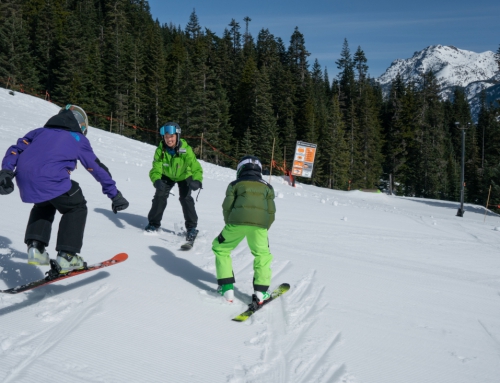32 Degrees: Uneasy Experiment Proves Power of Connection
This article, by Mike Hafer, appears in the Fall 2021 Issue of 32 Degrees; for other great stories you can read the full issue online.
At a clinic I led last spring at Boyne, Michigan, I realized that, except for an instructor named Luke, I’d never crossed paths with any of the 10 participants.
So I decided to test a theory. With the Learning Connection framework in mind, I thought it would be interesting to see if, and how, the group dynamics would change if I failed to create a connection with one student.
Collaborating with Luke, I hatched a plan to test the power of connection during the following day’s session. The results were astounding.
Ignoring One Student Alienates Everyone
When I was facilitating introductions and setting goals for the clinic, I purposefully ignored my partner in crime. I physically turned my back to him when I was speaking to the group. I then assigned a guided warmup task. After the warmup, I was purposefully abrupt and inaccurate with my feedback to Luke.
The reactions from the group were widespread. Initially, one person asked me how well I knew Luke as she thought I was joking around in a brotherly way. That was the best response; from there it only got worse. The group began to show a high level of empathy for Luke and I became the outsider.
Students Prioritize the Group Over Learning
It was clear the participants valued connection more than their own learning and skill development. My experiment only lasted 30 minutes as it became so uncomfortable for the clinic participants – and me – that I had to stop. I noticed others were physically backing away and becoming disengaged from the early conversations. I pulled the group together and shared what I was doing. We began to openly discuss the importance of connecting with everyone when leading a group.
The conversation quickly turned to how a negative first impression can affect the lesson. We spoke about the immediate lack of trust this behavior created for the group. The discussion evolved into how unintentional behaviors may create similar reactions.
A clear takeaway was that inadvertently turning your back on someone can create a sense of exclusion for that individual, which can start a chain reaction in other members of the group. Another example of failure had to do with giving feedback in a commanding format. The consensus was that involving the individual in their feedback was highly effective and impactful due to the inclusive atmosphere it creates. Lastly, the individual with whom I conspired felt as if the group was more focused on his emotions than the information provided in the clinic.
How to Build Connections in a Lesson
We continued to joke about my experiment throughout the weekend. This allowed me to demonstrate an effective way to connect within the clinic. Here are some tips to help you connect with your students, and to help your students connect with each other.
- Learn the names of those in your group… and use them.
- Write down student goals and revisit their goals throughout the lesson to confirm you are on the right track.
- Give specific feedback to each individual to personalize their experience.
- Create an inclusive environment where everyone participates in tasks and dialogue.
- Check in when someone is quiet or appears disengaged.
The ability to connect personally with everyone in our lessons is critical to our success. It doesn’t matter how much technical information we have to share, the lesson plan falls apart when we fail to engage. My failures with the group were quite overt in this experiment and it quickly proved how little things can add up. These actions can have a large impact on the individual and the group. No doubt about it; using personal connections as a teaching strategy contributes to a successful learning environment.
___
PSIA Alpine Team member Mike Hafer is currently serving a third term on the team. He is the general manager of the Adult Ski & Snowboard School at Colorado’s Breckenridge Resort.







